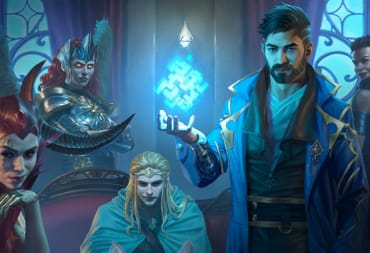The USC Game Expo 2020 was held through the magic of Zoom and Twitch recently, and we here at TechRaptor were enthusiastically in attendance. Seeing various student projects that range from the creatively ambitious to the deeply personal is always a great sign as to how much the gaming medium continues to evolve, expand, and mature. Furthermore, it is always a delight to see those very projects bring students and lovers of the medium together and just talk about the process.
Within a matter of minutes, I found an intriguing project called Leechbug: an underwater action-shooter that aims for a more strategic bent. You control a small robot as it explores an alien ocean, slowly working its way into larger alien organisms, controlling them, and moving up to more hostile waters to take over larger, more exotic hosts. It was such an enticing idea that I downloaded and played the demo completely blind... and then got kind of lost in it.
That was what kicked off my conversation with the head of Leechbug, Stephanie Ng. The big idea behind Leechbug isn't to just mindlessly shoot at your target until its health ticks down but to wrangle together a bunch of aquatic worms scattered throughout the level, then navigate them through the terrain and have them assist in wearing down your target. Go too fast and the worms will stop following you. Go too slow and the worms will eat you instead. Move too carelessly through environmental hazards—like underwater heat jets—and you'll lose some of your swarm in the process. It made the demo feel more like a puzzle game than a traditional action experience, and it lead to a lot of my preconceptions about the project being challenged.

The idea came while Ng's team were brainstorming on a completely different project. It was an action-shooter, but it was more sci-fi in scope with multiple levels set in multiple locations. But during the development process on what would be the underwater level, Ng and her team noticed something click when it came to navigating past the sea worms they had peppered throughout the level, and after some careful exploration of the concept, the sci-fi game was dropped and they focused on refining this central idea of resource manipulation and spatial reasoning.
As a project in its early stages, Leechbug is rough—it took me a lot longer than I care to admit to figure out how to guide worms to my target—but it's big hook has some solid potential. It speaks to the boldness and ingenuity of Ng's team that they found a potentially intriguing gameplay feature and honed in on it rather than sticking to convention. When I asked about this focus on freedom of movement and exploration, Ng cited her inspiration came from the open-ended freedom of The Legend of Zelda: Breath of the Wild
I left my time with Stephanie genuinely curious as to how Leechbug would continue to be refined and improved; how it would continue to push this more meticulous approach to an action experience and how future levels would continue to add new obstacles to overcome. Even at such an early state with only a single-level demo available, it speaks to its utter novelty that it managed to worm its way into my imagination.
Have a tip, or want to point out something we missed? Leave a Comment or e-mail us at tips@techraptor.net













